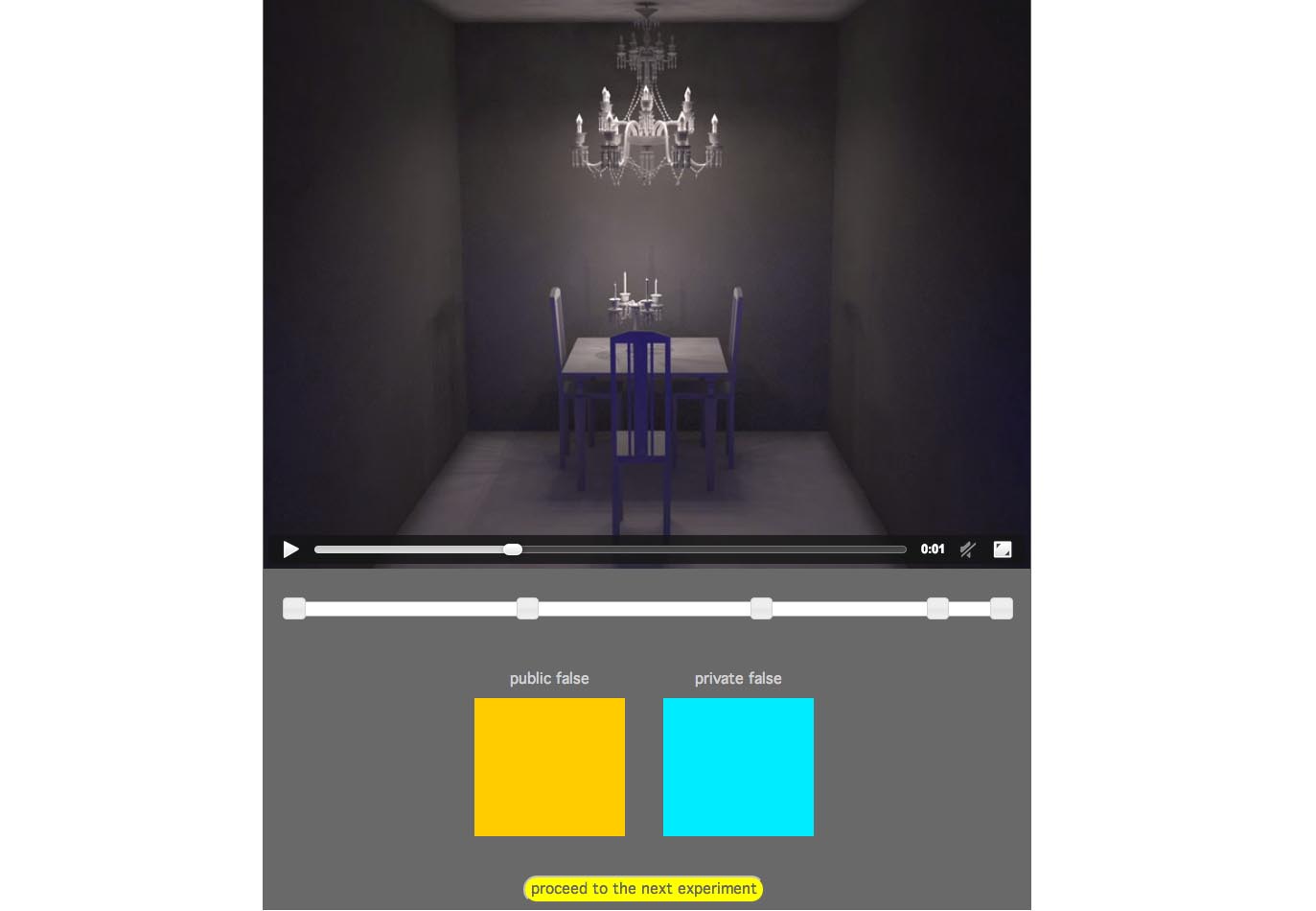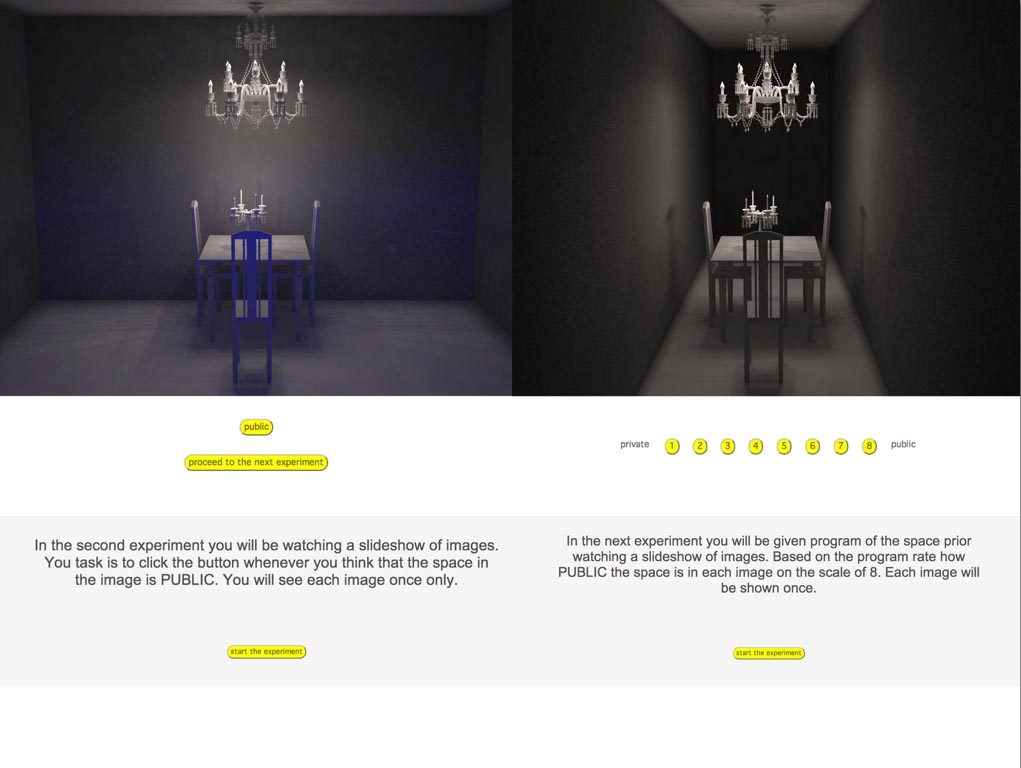|
Finding thresholds -Qualitative correspondence between discrete words and continuous space- Ekaterina Obyedkova Final project for the MIT class 4.566
Advanced Project in Digital Media | |
|
Crowd sourcing experiment demonstration The video shows an overview of the four experiments and the two questionnaires. This video was created in order to prepare test subjects for the experiment. Click here to enlarge the video. Movie info: mp4, 4:09 minutes | |
Project OverviewComputational technologies have become integral part of design process. Not only computer aided design replaced traditional drawing boards, it made possible new paradigms in design thinking and architecture. Novel design approaches most often exploit new ways of dealing with quantitative information and large datasets. What if, however, computers could have qualitative understandings of space that is very similar to ours? Then not only would computers be able to assist problem solving but also describe what spatial experiences a particular environment creates. In this project I decided to look at such qualitative notions of space as Public and Private. More specifically, at the qualitative correspondence between discrete words and continuous space. | ||
 |
Fig 1. Research hypothesis Such terms as public and private escape precise definition because they comprise a number of factors such as geometry, lighting, colour, texture, style and culture. In order to study differences and similarities in spatial perception of these abstract terms I have created a synthetic environment, Morphing Space, in which spatial variation is limited to height, width, lighting and colour. 1)Subjectivity: Although there are commonalities in spatial perception there is significant intersubjective variation. 2) Prior knowledge: Spatial perception is influenced through verbal instruction. 3) Relativity: Spatial perception is relative to the most immediate experiences. Fig. 1 gives an example of a public space and a private space. |
 |
Fig 2. Experiment 1 The first experiment is based on an animation of Morphing Space. User's task is to define which parts of the animation represent public space and which represent private space. |
 |
Fig 3. Experiment 2,3 and 4 Experiment 2 is based on a slide show of images. Users are asked to tag all images that show public space. The images are randomly mixed frames from the animation. Experiment 3 is also image based but for every image the user is asked to rate it on the scale of 8. In Experiment 4 the users are given programmatic description of space prior rating every image on the scale of 8. |
 |
Fig 4. Data sample and Questionnaires Test subjects were asked to fill in two questionnaires: personal information(prior the experiment) and subjective feedback(after the experiments). |
 |
Fig 5. Data Analysis and Contributions 1) Developed a crowd sourcing experiment, consisting of 4 parts. |
|
Further development 1) Further research on design concepts and spatial perception can
incorporate other notions, such as open space, narrow space etc.
|